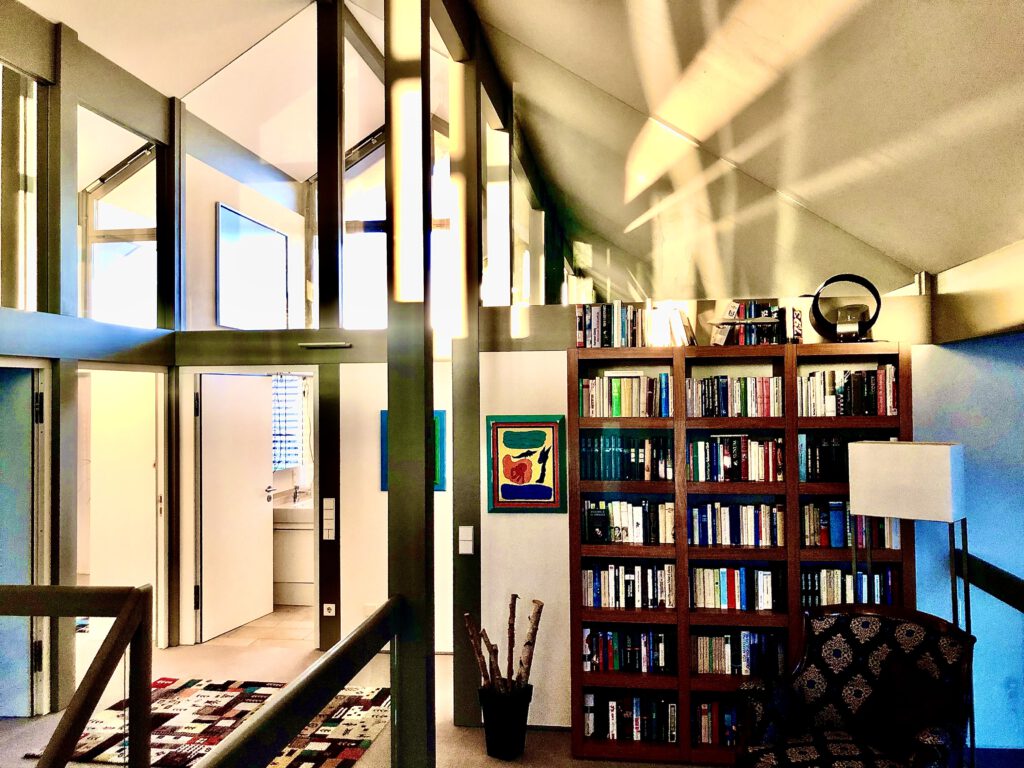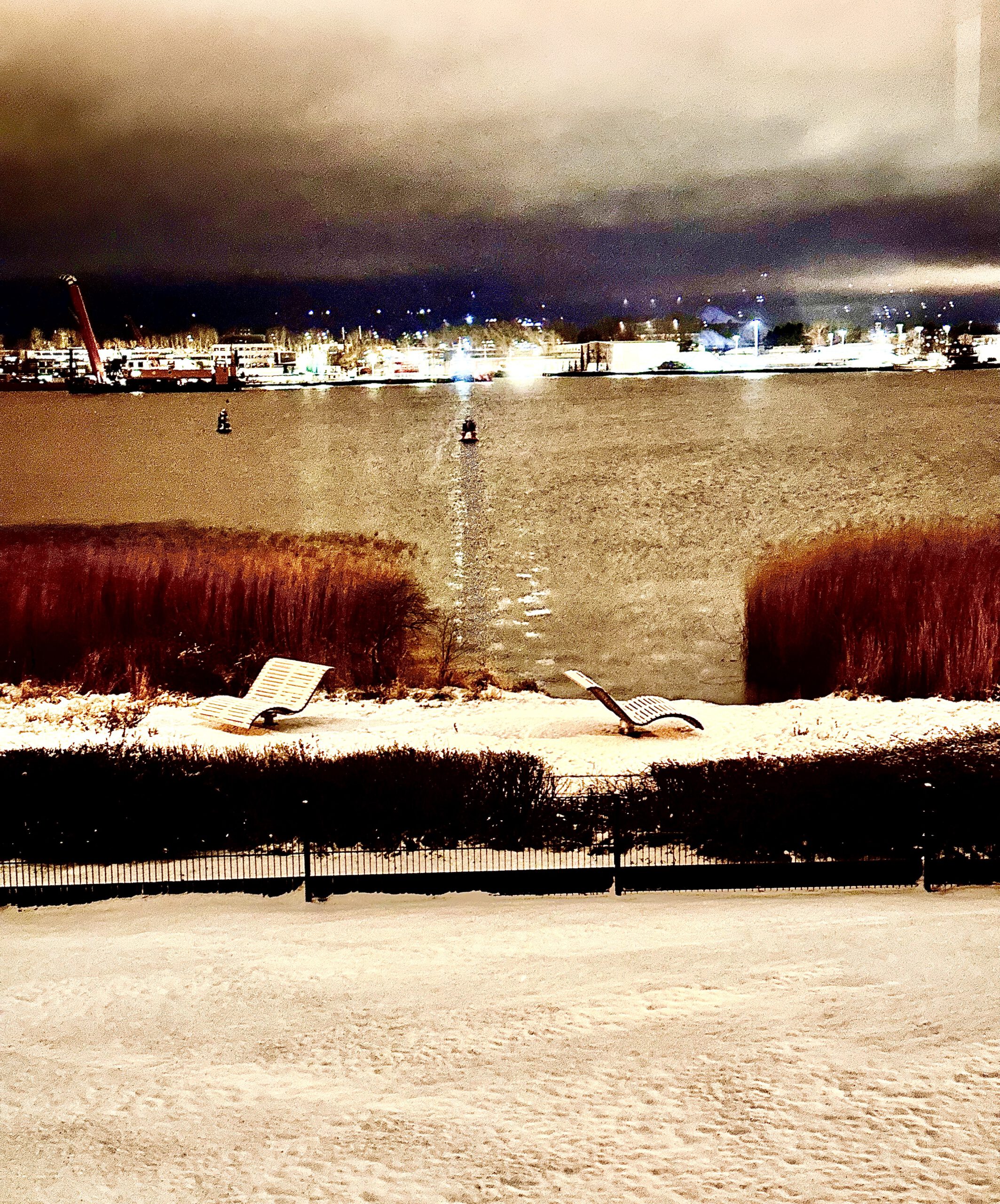Saphenion®: VenaSeal® Stammkrampfader in 11 Minuten – 13 Jahre klinische Erfahrungen weltweit
Saphenion®: VenaSeal® Stammkrampfader in 11 Minuten – Das Venenkleben hat sich in den letzten 13 Jahren weltweit etabliert. Auch in Deutschland arbeiten inzwischen ca. 30 Venenzentren nach dieser vergleichsweise neuen – aber auch wieder nicht so neuem – Methode. Der Biokleber ist in seinen Grundbestandteilen bereits seit Beginn der 60er Jahre im Einsatz in nahezu allen operativen Disziplinen.
Wir führen diese Methode seit 1.8.2012 zunächst in Berlin und Rostock, seit einem Jahr ganzjährig im Rostocker Gefäßzentrum durch und haben bisher 2082 Patienten an 4281 Stammkrampfadern therapiert.
Saphenion®: VenaSeal® Stammkrampfader in 11 Minuten – eine filmische Darstellung
Saphenion®: VenaSeal® Stammkrampfader in 11 Minuten – Der Film zeigt eine typische Venenverklebung an einer Stammvene des linken Beines. Die Punktionsstelle liegt oberhalb des Kniegelenkes, da die Magnavene beinabwärts subkutan in Serpentinen verläuft. Dieser untere Abschnitt wird in 7 Tagen dann mit Sealing Foam, dem klebenden Mikroschaum therapiert. Für den im Film gezeigten Befund brauchten wir 11:30 Minuten. Es wurde keine Anästhesie eingesetzt, weder lokal noch systemisch. Die Patientin hatte sich eigene Kopfhörer mitgebracht und hörte „The Cure“.
Saphenion®: VenaSeal® Stammkrampfader in 11 Minuten – der typische Ablauf dieser Therapie
Saphenion®: Venenkleben Stammkrampfader in 11 Minuten – Nach dem Eingriff konnte die Patientin selbstständig vom OP-Tisch aufstehen und in den 7 m entfernten Aufwachraum gehen. Dort nahm sie sich ein Buch und schaute auf das Berliner Panorama. Kompressionsstrümpfe waren nicht notwendig.
Wir haben für den Eingriff und den Verschluss der Magna bis zur Punktionsstelle 1,1 ml VenaSeal – Kleber benötigt. Die Gesamtbehandlungsdauer betrug 11 : 30 Minuten.
Saphenion®: VenaSeal® Stammkrampfader in 11 Minuten – Zur Kostenübernahme
Für das Venenkleben und die anschließende Sealing Foam – Therapie hatte die Patientin hatte bei der AOK Ost eine Kostenerstattung für die Gesamtbehandlung beantragt und diese wurde freundlicherweise auch bestätigt. Es kommt in den letzten Jahren öfter vor, daß auch gesetzliche Krankenkassen die Kosten für dieses schonende Verfahren übernehmen, sofern besondere Gründe vorliegen, die eine radikale Chirurgie verbieten.
Bei den Privatversicherungen gibt es bis auf einzelne Ausnahmen einen Konsens in der analogen Abrechnung des Verfahrens gemäß der GOÄ.
Saphenion®: VenaSeal® Stammkrampfader in 11 Minuten – Saphenion®: Sealing of varicose veins in 11 minutes
Saphenion®: Sealing of varicose veins in 11 minutes – 13 years of clinical experience worldwide
Sealing veins has become established worldwide in the last 13 years. In Germany, about 30 venous centers are working according to this comparatively new – but not so new – method. In its basic components, bio-adhesive has been in use in almost all operating disciplines since the beginning of the sixties.
We have been using this method since August 1, 2012, initially in Berlin and Rostock, and for the past year all year round at the Rostock Vascular Center, and have treated 2082 patients with 4281 varicose veins to date.
Saphenion®: Sealing of varicose veins in 11 minutes – a short cinematic presentation
The film shows a typical vein attachment to a truncal vein of the left leg. The puncture site is above the knee joint, as the magnates underneath run subcutaneously in serpentines. This lower section will be treated in 7 days with Sealing Foam, the sealing microfoam. For the result shown in the film, we needed 11: 30 minutes. No anesthesia was used, neither locally nor systemically. The patient had her headphones and listened to „The Cure“.
Saphenion®: Sealing of varicose veins in 11 minutes – the typical procedure for this therapy
After the procedure, the patient could get up independently from the operating table and go to the recovery room 7 m away. There she took a book and looked at the panorama of Berlin. Compression stockings were not necessary.
We needed 1.1 ml of VenaSeal – Glue for the procedure and closure of the GSV to the point of puncture. The total treatment time was 11 minutes 30 seconds.
The patient had applied to the AOK Ost for full reimbursement of the VenaSeal® and Sealing foam – treatment – complex and this was kindly confirmed.

Film / Photos: Claudia, Utzius
Der Patient hat seine mündliche und schriftliche Einwilligung für den Film gegeben.
Links / Papers:
Almeida JI, Murray SP, Romero ME. Saphenous vein histopathology 5.5 years after cyanoacrylate closure. J Vasc Surg Venous Lymphat Disord. 2020 Mar;8(2):280-284. doi: 10.1016/j.jvsv.2019.04.014. Epub 2019 Jul 4. PubMed PMID: 31281102.
Chan YC, Law Y, Cheung GC, Ting AC, Cheng SW. Cyanoacrylate glue used to treat great saphenous reflux: Measures of the outcome. Phlebology. 2017 Mar;32(2):99-106. doi 10.1177/0268355516638200. Epub 2016 Jul 9. PubMed PMID: 27052039.
Chan SSJ, Yap CJQ, Tan SG, Choke ETC, Chong TT, Tang TY. The utility of endovenous cyanoacrylate glue ablation for incompetent saphenous veins in the setting of venous leg ulcers. J Vasc Surg Venous Lymphat Disord. 2020 Mar 20. PII: S2213-333X(20)30100-1. doi: 10.1016/j.jvsv.2020.01.013. [Epub ahead of print] PubMed PMID: 32205130.
Cho S, Park HS, Lee T, Byun SJ, Yun WS, Yang SS, Kim H, Kim WS, Joh JH, Jung IM. CASS (CyanoAcrylate closure versus Surgical Stripping for incompetent saphenous veins) study is a randomized controlled trial comparing clinical outcomes after cyanoacrylate closure and surgical stripping for the treatment of incompetent saphenous veins. Trials. 2020 Jun 3;21(1):460. doi 10.1186/s13063-020-04393-0. PMID: 32493398; PMCID: PMC7268719.
Gibson K, Ferris B. Cyanoacrylate closure of incompetent great, small, and accessory saphenous veins without post-procedure compression: Initial outcomes of a post-market evaluation of the VenaSeal System (the WAVES Study). Vascular. 2017 Apr;25(2):149-156. doi 10.1177/1708538116651014. Epub 2016 Jul 9. PubMed PMID: 27206470.
Gibson K, Morrison N, Kolluri R, Vasquez M, Weiss R, Cher D, Madsen M, Jones A. Twenty-four month results from a randomized trial of cyanoacrylate closure versus radiofrequency ablation for the treatment of incompetent great saphenous veins. J Vasc Surg Venous Lymphat Disord. 2018 Sep;6(5):606-613. doi: 10.1016/j.jvsv.2018.04.009. Epub 2018 Jun 15. PubMed PMID: 29914814.
Jones AD, Boyle EM, Woltjer R, Jundt JP, Williams AN.J Vasc Surg Cases Innov Tech. 2019 Aug 7;5(3):372-374. doi: 10.1016/j.jvscit.2019.05.004. eCollection 2019 Sep.PMID: 31440717
Jones AD, Boyle EM, Woltjer R, Jundt JP, Williams AN. Persistent type IV hypersensitivity after cyanoacrylate closure of the great saphenous vein. J Vasc Surg Cases Innov Tech. 2019 Aug 7;5(3):372-374. doi: 10.1016/j.jvscit.2019.05.004. eCollection 2019 Sep. PubMed PMID: 31440717; PubMed Central PMCID: PMC6699189.
Kiguchi MM, Reynolds KB, Cutler B, Tefera E, Kochubey M, Dirks R, Abramowitz SD, Woo EY, O’Banion LA. Perforator treatment is needed after VenaSeal and ClosureFast endovenous saphenous vein closure in CEAP 6 patients. J Vasc Surg Venous Lymphat Disord. 2021 Jun 7:S2213-333X(21)00295-X. doi: 10.1016/j.jvsv.2021.04.020. Epub ahead of print. PMID: 34111593.
Kolluri R, Chung J, Kim S, Nath N, Bhalla BB, Jain T, Zygmunt J, Davies A. Network meta-analysis to compare VenaSeal with other superficial venous therapies for chronic venous insufficiency. J Vasc Surg Venous Lymphat Disord. 2020 Feb 13. PII: S2213-333X(19)30702-4. doi: 10.1016/j.jvsv.2019.12.061. [Epub ahead of print] Review. PubMed PMID: 32063522.
Nasser H, Ivanics T, Shakaroun D, Lin J. Severe phlebitis-like abnormal reaction following great saphenous vein cyanoacrylate closure. J Vasc Surg Venous Lymphat Disord. 2019 Jul;7(4):578-582. doi: 10.1016/j.jvsv.2019.03.010. Epub 2019 May 8. PubMed PMID: 31078516.
Navarro-Triviño FJ, Cuenca-Manteca J, Ruiz-Villaverde R. Allergic contact dermatitis with systemic symptoms caused by VenaSeal. Contact Dermatitis. 2020 Mar;82(3):185-187. doi 10.1111/cod.13431. Epub 2019 Nov 15. PubMed PMID: 31674037.
Park I. Successful use of VenaSeal system for the treatment of large great saphenous vein of 2.84 cm diameter. Ann Surg Treat Res. 2018 Apr;94(4):219-221. doi: 10.4174/astr.2018.94.4.219. Epub 2018 Mar 26. PubMed PMID: 29629358; PubMed Central PMCID: PMC5880981.
Park I. Initial Outcomes of Cyanoacrylate Closure, VenaSeal System, for treatingthe Incompetent Great and Small Saphenous Veins. Vasc Endovascular Surg. 2017 Nov;51(8):545-549. doi 10.1177/1538574417729272. Epub 2017 Oct 2. PubMed PMID: 28969499.
Park I, Kim D. Correlation Between the Immediate Remnant Stump Length and Vein Diameter After Cyanoacrylate Closure Using the VenaSeal System During Treatment of an Incompetent Great Saphenous Vein. Vasc Endovascular Surg. 2019 Oct 3:1538574419879563. doi:10.1177/1538574419879563. [Epub ahead of print] PubMed PMID: 31581906.
Shaĭdakov EV, Mel’tsova AZ, Porembskaia OI, Kudinova EA, Korzhevskiĭ DÉ, Kirik OV, Sukhorukova EG. [Experience with using cyanoacrylate glue in endovascular treatment of varicose veins]. Angiol Sosud Khir. 2017;23(4):62-67. Russian. PubMed PMID: 29240057.
Lam YL, De Maeseneer M, Lawson J, De Borst GJ, Boersma D. Expert review on the VenaSeal® system for endovenous cyanoacrylate adhesive ablation of incompetent saphenous trunks in patients with varicose veins. Expert Rev Med Devices. 2017 Oct;14(10):755-762. doi 10.1080/17434440.2017.1378093. Review. PubMed PMID: 28892412.
Lane TR, Kelleher D, Moore HM, Franklin IJ, Davies AH. Cyanoacrylate glue for the treatment of great saphenous vein incompetence in the anticoagulated patient. J Vasc Surg Venous Lymphat Disord. 2013 Jul;1(3):298-300. doi: 10.1016/j.jvsv.2012.09.007. Epub 2013 Feb 15. PubMed PMID: 26992590.
Morrison N, Gibson K, McEnroe S, Goldman M, King T, Weiss R, Cher D, Jones A. Randomized trial comparing cyanoacrylate embolization and radiofrequency ablation for incompetent great saphenous veins (VeClose). J Vasc Surg. 2015 Apr;61(4):985-94. doi: 10.1016/j.jvs.2014.11.071. Epub 2015 Jan 31. PubMed PMID: 25650040.
Morrison N, Gibson K, Vasquez M, Weiss R, Jones A. Five-year extension study of patients from a randomized clinical trial (VeClose) comparing cyanoacrylate closure versus radiofrequency ablation for the treatment of incompetent great saphenous veins. J Vasc Surg Venous Lymphat Disord. 2020 Mar 20. PII: S2213-333X(20)30105-0. doi: 10.1016/j.jvsv.2019.12.080. [Epub ahead of print] PubMed PMID: 32205125.
O’Banion LA, Reynolds KB, Kochubey M, Cutler B, Tefera EA, Dirks R, Kiguchi MM. Treatment of superficial venous reflux in CEAP 6 patients: a comparison of cyanoacrylate glue and radiofrequency ablation techniques. J Vasc Surg Venous Lymphat Disord. 2021 Jan 13:S2213-333X(21)00001-9. doi: 10.1016/j.jvsv.2020.12.082. Epub ahead of print. PMID: 33453440.
Park I. Human Saphenous Vein Histopathology 2 Years After Cyanoacrylate Closure Using the VenaSeal™ System. Ann Vasc Surg. 2021 Feb;71:534.e17-534.e21. doi: 10.1016/j.avsg.2020.09.017. Epub 2020 Sep 16. PMID: 32949737.
Tang TY, Yap CJQ, Chan SL, Soon SXY, Yap HY, Lee SQW, Choke ETC, Chong TT. Early results of an Asian prospective multicenter VenaSeal real-world postmarket evaluation to investigate the efficacy and safety of cyanoacrylate endovenous ablation for varicose veins. J Vasc Surg Venous Lymphat Disord. 2021 Mar;9(2):335-345.e2. doi: 10.1016/j.jvsv.2020.03.020. Epub 2020 May 7. PMID: 32387378.
Watts TJ, Thursfield D, Haque R. Allergic contact dermatitis caused by VenaSeal tissue adhesive. Contact Dermatitis. 2019 Jun;80(6):393-395. doi 10.1111/cod.13206. Epub 2019 Jan 30. PubMed PMID: 30582174.
https://www.ajsccr.org/index.php
Zierau UT and Lahl W: Recurrence Discussion in Varicose Veins Therapy – A Critical Examination of the Vein Stump discussion; J. Vasc. Endovasc. Therapy 2019, Vol.4 No.2:13
